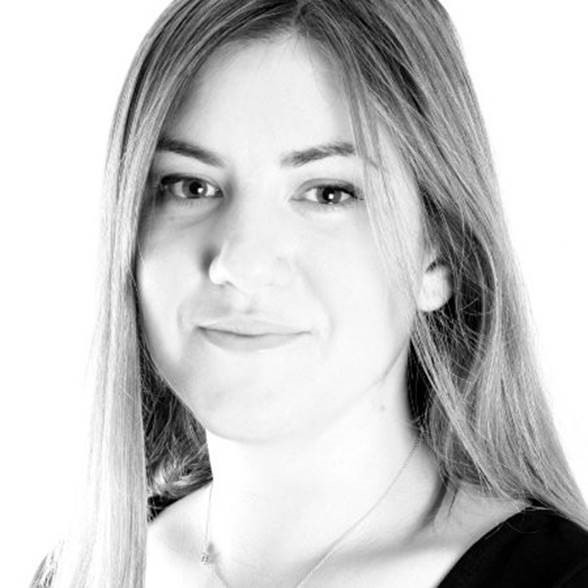Jon Bushell ventures into the Royal Society archives and finds the notebooks of Sir Robert Wilson FRS, which tell the story behind the International Ultraviolet Explorer satellite project.
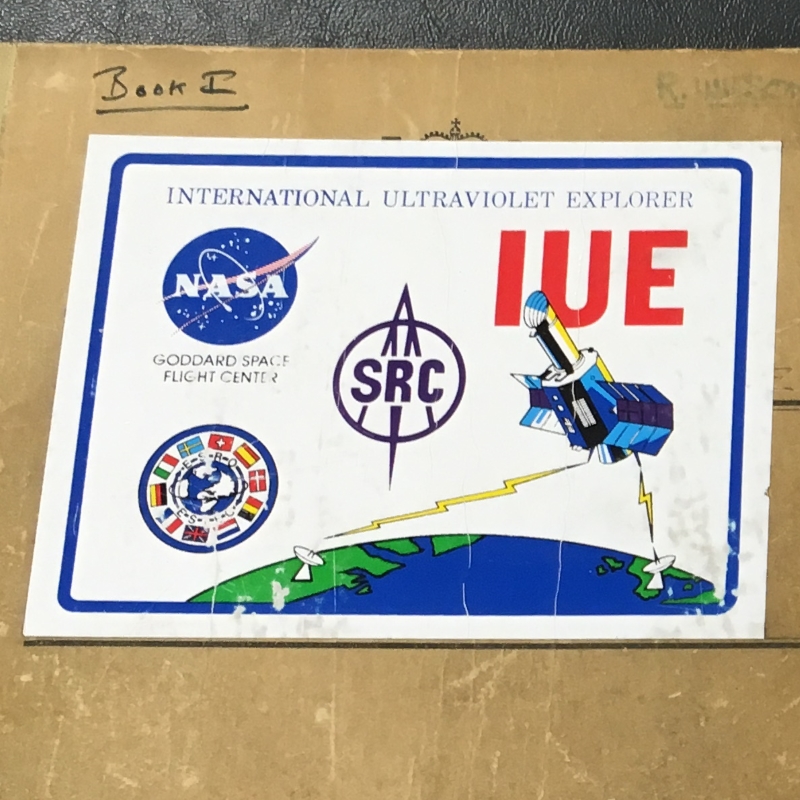
Having recently joined the Royal Society as the new Modern Records Archivist, I’m finding myself very much in awe of the extensive and fascinating records we hold here in the Society’s archives. One donation we received just last year is a pair of notebooks that belonged to Sir Robert Wilson (1927-2002), a notable astrophysicist and Fellow of the Royal Society.
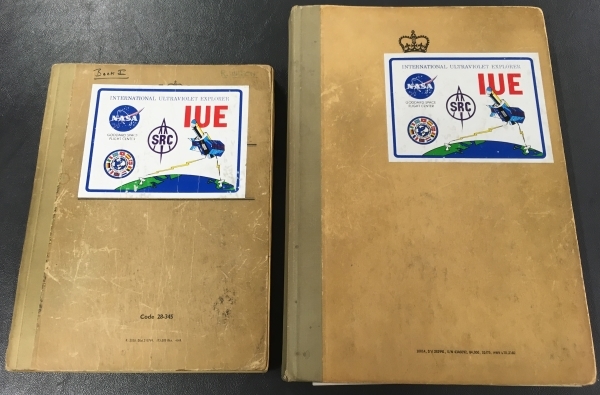
The notebooks relate to Wilson’s work on the development and launch of one of the most important astronomical satellites of the 20th century: the International Ultraviolet Explorer (IUE), launched from Cape Canaveral on 26 January 1978.
For Wilson this was the culmination of more than a decade of work. He led a group that first proposed an orbiting satellite equipped with ultraviolet spectrographs to the European Space Research Organisation in 1964. Despite initially being accepted in 1966, the project ran into financial difficulties and was cancelled in 1968. A second proposal was presented after the cancellation, but this was also rejected on financial grounds.
Still undeterred, Wilson sent the proposal and designs to Leo Goldberg, Chairman of the Space Science Board in the US. Finally, in 1973, his persistence paid off and the IUE proposal was approved, jointly funded by NASA, the newly-formed European Space Agency (ESA), and the UK Science and Engineering Research Council.
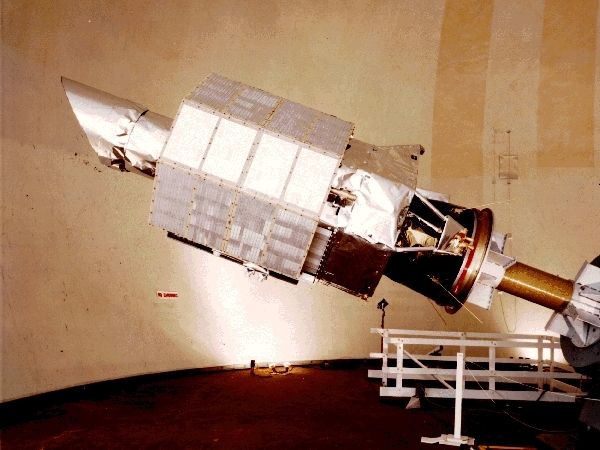
Pre-launch image of the IUE in its testing phase. Credits: NASA / Space Telescope Science Institute (STScI)
The two notebooks cover the period between May 1971 and September 1978, and include Wilson’s notes from meetings he attended both in the UK and in the US, covering all aspects of the project from finances to technical discussions. Much of Wilson’s time was spent working in the UK at UCL, dealing with the technical challenge of developing the ultraviolet detectors and software for the IUE. Work began on these at UCL in 1973, and Wilson was appointed UK Project Director in 1975 to ensure that the components could be delivered to NASA by the end of 1976.
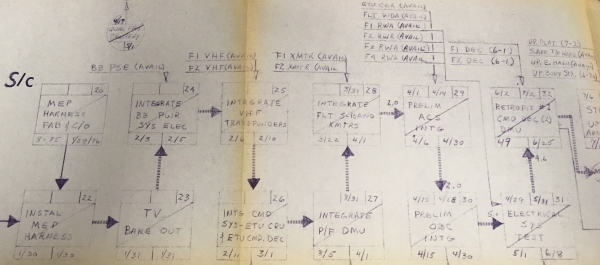
Financial matters continued to be a cause for concern for the IUE project. At one particular meeting on 22 October 1974, a suggestion was raised to abandon plans for a separate European ground station, with all observations being routed through the US control centre instead. “Claims a $4m saving over six years. Very shallow paper without any deep analysis”, as Wilson commented, making his own opinions on the matter quite clear. No doubt he was relieved that this proposal wasn’t taken forward, and, when the IUE launched, Europe did have its own ground station in Spain known as VILSPA, which today is the site of the European Space Astronomy Centre.
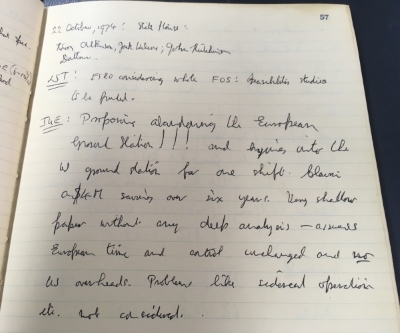
The lead-up to the satellite launch was clearly a frantic few days for Wilson and the scientists involved in the project. At a final planning session on 20 January 1978, 67 days’ worth of calibrations and tests for the satellite instruments were finalised, which would ensure the stability and performance of the on-board systems before the bulk of scientific observations began.
In contrast to the meetings and last-minute phone calls of the previous days, the entry for 26 January, written at Cape Canaveral, simply reads: “IUE launched successfully 12.35 local time”. There is one other crucial piece of information which Wilson recorded: celebrations that evening took place in The Mouse Trap, a restaurant and bar in Cocoa Beach which was popular with astronauts and scientists until it closed in the 1980s.
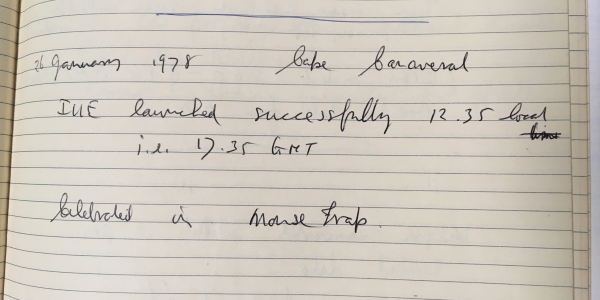
A key design principle of the IUE project was to ensure that data from the satellite was widely accessible. After the initial period of calibration, use of the IUE was opened up to accepted proposals from scientists across Europe and the US. A project meeting after the launch notes that NASA and the ESA were in the process of considering more than 300 proposals between them! Organising timeslots for the use of the IUE’s systems was no easy task, as a copy of the UK’s 1978-79 observing schedule shows:
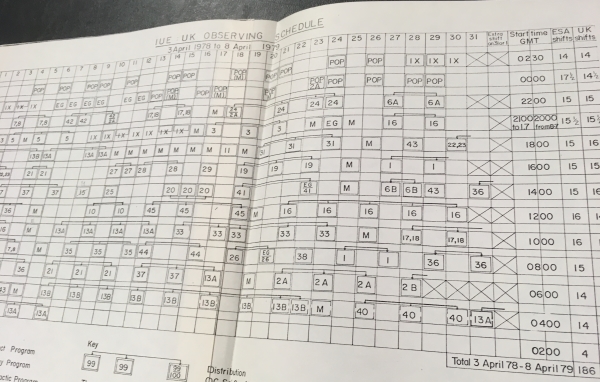
It’s safe to say that not even Wilson could have predicted just how astronomically successful the IUE would be. Despite launching with an expected lifespan of three to five years, it continued to run until 1996. When the satellite was finally shut down at the end of September that year, it was due to financial constraints rather than any technical failures.
Figures published by the ESA in 2003 estimated that more than 3,500 peer-reviewed publications and 250 PhD dissertations had made use of data from the IUE, and the Space Telescope Science Institute hosts a complete online archive of the IUE data, which continues to be of interest to scientists today. The two notebooks we hold in our archive offer us a glimpse of the years of hard work that Wilson and his colleagues put into the IUE project, ensuring its legacy as one of the most successful satellite missions of the 20th century.



